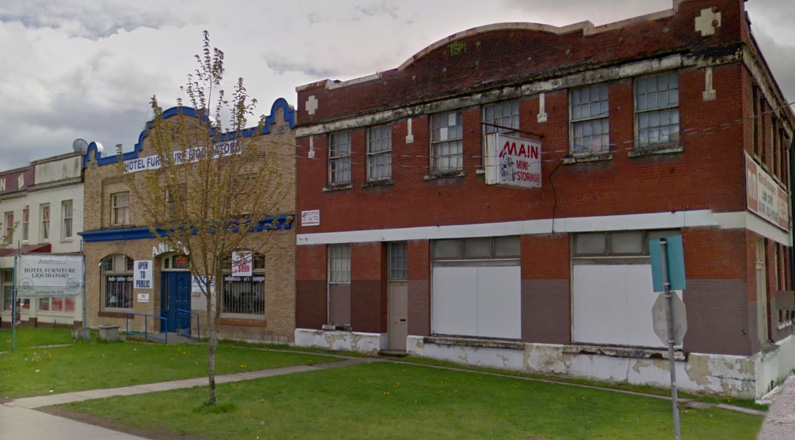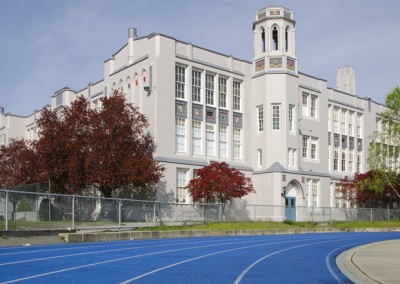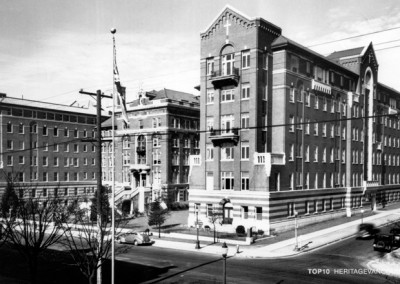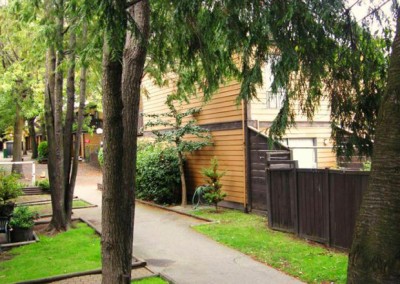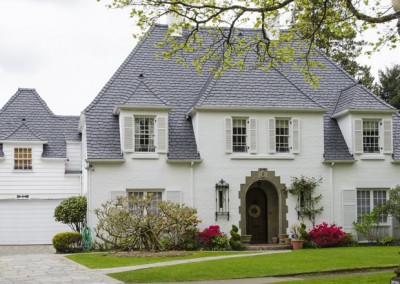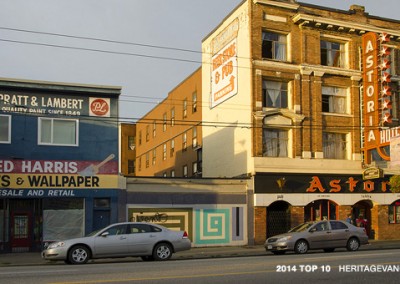This handsome group of industrial buildings fronting Terminal and Western on False Creek Flats are some of the last original industrial heritage buildings remaining in the Eastern Core.
The group facing Terminal Avenue was purpose-built for Massey Harris farm implements, the BC Valve Company, and Vancouver Neon Products, all in the early to mid 1920s. Other buildings located on Western Street between Northern, Central and Southern Streets were constructed for lighter industrial uses like canning, meatpacking, lumber services and machinist shops.
Altogether this industrial group represents a wonderful microcosm of Vancouver’s industrial growth after eastern False Creek was filled, with a corresponding change in industry to reflect the times. An original CP rail spur enters the site from the east at Northern Street, connecting back to the Eastern Core rail yard lands.
Almost none of these industrial heritage buildings have been recognized on the Heritage Register and are in a rundown state. The specific area fronting Terminal Avenue has already been zoned to match the west side of Main Street. With development encroaching from all sides, it is crucial to take a closer look at these buildings, and determine their importance to the False Creek Flats.
Threat
What is the threat to this industrial grouping?
Rising land values, an impressive central location, the 2020 Greenest Action Plan, and the redevelopment of a portion of “the Flats” into educational, digital media, arts and culture uses, has placed focus on this industrial area.
Although geographically located properly in False Creek Flats, the block fronting Terminal Avenue east of Main is depicted on the City of Vancouver’s zoning map as “East False Creek,” extending the cachet of the popular South East False Creek community. The change in zoning allows present light industrial use to be replaced with a high-density mixed commercial use neighborhood.
The remaining area of False Creek Flats is reserved for warehouse and light industry use. Changing zoning on the Flats requires regional approval and council approval to convert the industrial land to other uses.
Significance
Why is this industrial grouping significant?
Resulting from the early industrial boom serving the False Creek area and created around the same time as Granville Island, these building lots were initially marketed as part of the “False Creek Infill” area and housed brick warehouses and corrugated tin-clad buildings serving as welding shops, shingle factories, manufacturers of industrial equipment, and warehouses for the mining, construction and shipping industries.
The three remaining buildings facing Terminal Avenue have a heritage history:
The Massey-Harris Building at 242 Terminal is a prominent heritage industrial building remaining on False Creek Flats. Designed by Gardiner & Mercer Architects, it was constructed in 1923 as a warehouse and showroom for Massey-Harris agricultural implements and tractors.
Adjacent at 250 Terminal is the BC Valve Company, built in 1924 as a factory, office and laboratory. This was one of the first buildings in BC constructed by Smith Bros & Wilson shortly after they established their Vancouver office. In 1930, the building was home to Rennie Seeds, and an original sign for Rennie Seeds painted onto the brick remains visible at the second level on the west side.
260 Terminal was home to Neon Products, started in 1924 by George Sweeney with other investors and providing neon to Western Canada. At this location, Vancouver’s famous neon signs were designed and constructed including the beloved “Only Seafoods” sign located at 20 East Hastings.
Position
Heritage Vancouver’s position
The City of Vancouver’s 2020 Greenest Action Plan to convert the Flats into green zone would be an opportunity for retrofitting this original group of industrial buildings into a “heritage heart” encompassing sustainable building practices while showcasing the early 20th century industrial architecture.
The arts/design/culture emphasis on a significant part of the property can tie into these buildings and others on the flats; i.e., neon sign design and manufacture site (260 Terminal), original neon displayed throughout the flats.
Massey-Harris is a prime candidate to save and renew as part of any development, and still retains its multi-paned windows and red brick facade.
The retention of rugged industrial structures can add texture and diversity (like Domtar Salt, and Opsal Steel) to homogenous new construction, by telling the story of the area’s evolution.
